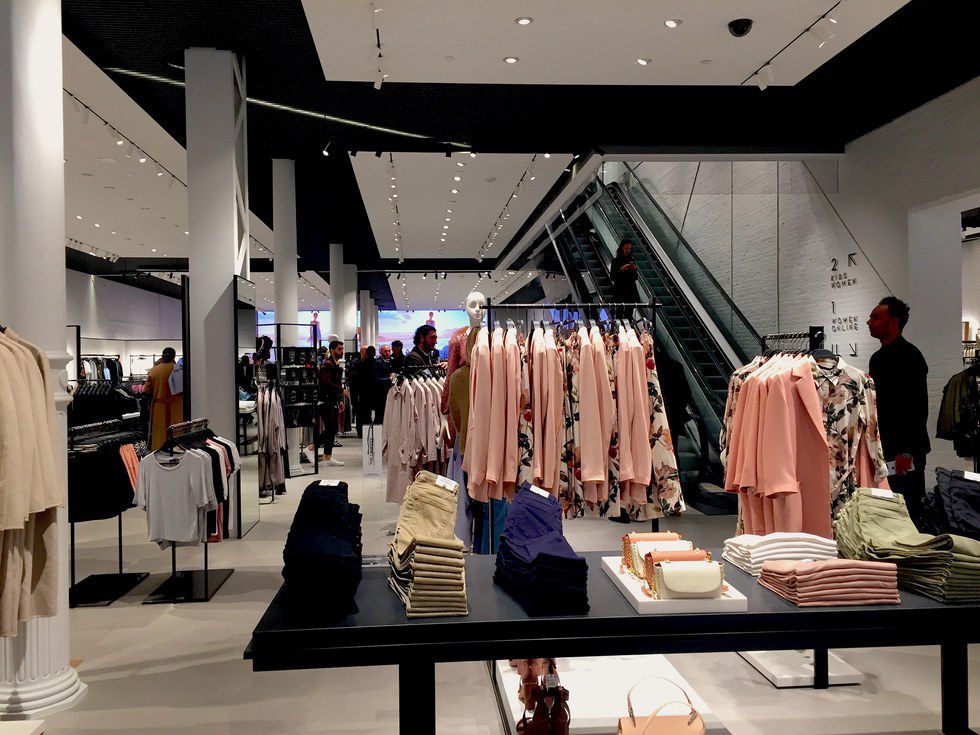Zara, a retail powerhouse in the spectrum of fast fashion, is finding growing success thanks to the efficiency and synchronization of its supply chain. In order to provide its customers with the ever-changing inventory that they have come to expect from the store, Zara controls a much greater percentage of its supply chain than most global retailers do. From fabric sourcing to manufacturing, distributing, and retailing, the company constantly keeps a high percentage of both upstream and downstream aspects of the chain in-house. Instead of risking slow delivery times with cheaper outsourcing, Zara relies on higher-paid European workers to produce better quality materials with a faster turnaround time. Additionally, the company makes sure to reserve 85% of their factory capacity for in-season adjustments, and commits to only 15-25% of a season’s line six months in advance. By the start of the season, Zara has locked in roughly 50-60% of its line, which means that if a trend or style becomes popular in the middle of the season, Zara is able to quickly design, produce, and distribute a product, while the item is still peaking. The company also avoids excess inventory in any stage of its supply chain, and distributes only small batches of clothing and accessories to each of its stores. By doing this, Zara is maintaining an image of being exclusive while reducing much of the risk prevalent in fast fashion stocking. The lower inventory found in stores also results in much less unsold product to dispose of; while the industry average for unsold items is 20%, unsold merchandise makes up less than 10% of Zara’s inventory. Zara’s supply chain, which is centered upon speed and rhythm, sends out merchandise on two specific days per week, so that every staff member involved from production to retail knows their designated timeline, and Zara customers are met with continuity when entering stores. The industry standard for getting a product from concept to store is 6 months, but through utilizing this corporate VMS, Zara is able to speed away from the competition with only 15 days necessary. This quick turnaround and seamless movement of an item from production to distribution truly sets Zara away from competitors like H&M and Forever 21.
In my opinion, Zara is the leading name in the fast fashion market and the layout of their supply chain has everything to do with that. Because each aspect of producing and distributing a product is controlled by a unified company, they are able to please their target consumer almost immediately, which is important in a segment where millennials crave instant gratification and excitement. Additionally, their inventory optimization models provide them with lower excess product and in turn, higher profits. These profits allow Zara to supply the customer with better quality goods than would be found at most other fast fashion retailers, which is important to consumers who value more durable and comfortable trend apparel. The lower inventory also supplements Zara’s brand image by adding exclusivity, which can increase customer esteem when shopping there and also allows the company to sell a greater number of items at full price. In terms of sourcing, I find it favorable that Zara pays its workers higher wages than many of its developing world counterparts. This demonstrates ethical benefits present in the company’s supply chain. These workers often occupy factories close to Zara’s headquarters in Spain and allow for quicker, more seamless transportation of goods, which I find to be an intelligent way to insure productive and less risky sourcing. An interesting aspect of Zara’s supply chain comes with their customer research. Store managers communicate customer feedback on what consumers like, and this information is instantly relayed to designers who incorporate it into their designs. This element creates higher brand-favorability among customers and is a unique concept not always present in middle-end brands. Overall, I feel that Zara’s corporate vertical marketing system is giving them a strong competitive advantage and will be emulated by other fast fashion companies in the future.























